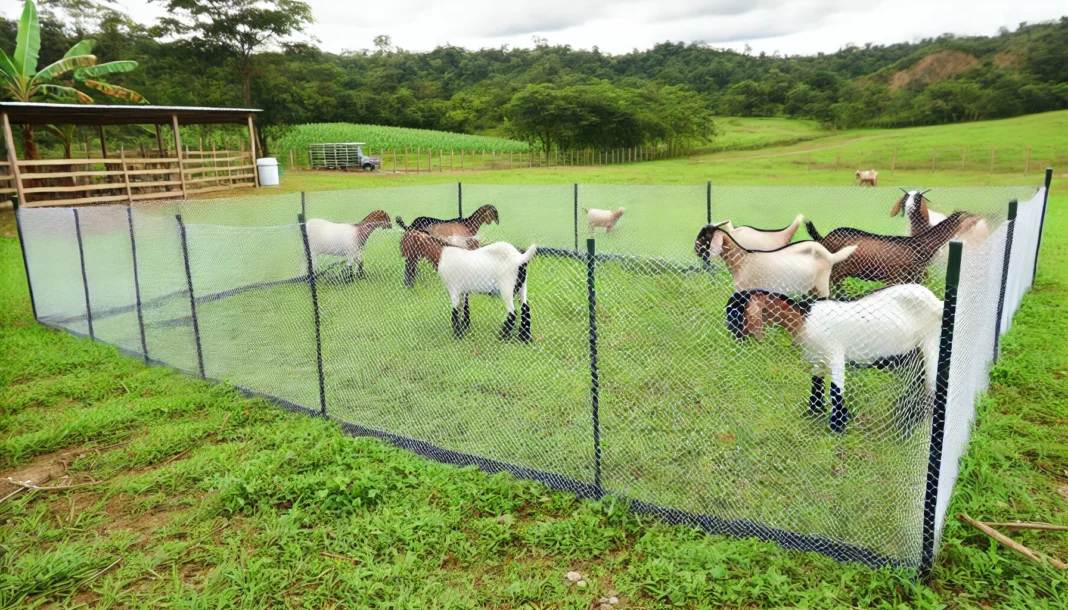Buffalo farmers in India know good feeding is key to herd health. Understanding Buffalo Feeding Management needs helps ensure optimal nutrition. This leads to better health and higher productivity for your buffaloes.
Buffaloes digest food differently than other animals. Their rumen moves slower, affecting how they use feed. Keeping the right rumen pH is vital for good digestion and nutrient absorption.
Your buffaloes need specific amounts of energy, protein, minerals, and vitamins. These nutrients are crucial for growth, breeding, and milk production.
Good feeding practices can boost your herd’s health and output. This includes choosing the right forage and feed, managing grazing, and using supplements.
Stay current on buffalo nutrition research. New ideas like feed additives can improve your herd’s performance and profit.
Key Points
- Understanding buffalo digestion is key to better feed use and nutrient absorption.
- Meeting specific nutrient needs is crucial for buffalo health and productivity.
- Good forage, feed choice, grazing, and supplements are vital for effective feeding.
- Innovative additives like polysaccharide complexes can boost buffalo nutrition and performance.
- Keeping up with new research helps you make smart feeding choices for your herd.
Understanding Buffalo Digestive Physiology
Buffalo farmers need to know their herd’s unique digestive system. This knowledge helps optimize nutrition and overall health. Buffaloes have a complex system that breaks down vegetable feed using rumen micro-organisms.

Ruminant Digestive System
Ruminants have a four-chambered stomach: rumen, reticulum, omasum, and abomasum. The rumen, the largest part, houses micro-organisms that ferment plant material. These produce volatile fatty acids (VFAs), the buffalo’s main energy source.
Slower Rumen Movement in Buffaloes
Buffaloes have slower rumen movement than cattle. This results in slower ingesta outflow and increased microbial fermentation. Buffaloes digest fiber 5-8% more efficiently than cattle due to this slower passage rate.
Rumen pH and Feed Utilization
Stable rumen pH is vital for optimal feed use in buffaloes. Normal pH ranges from 6 to 7, varying with feed type and timing. pH changes can upset rumen microbes, reducing feed efficiency and causing health issues.
To boost feed utilization and maintain a healthy rumen, try these strategies:
- Provide a balanced diet with enough fiber to stimulate rumen motility and maintain pH.
- Avoid sudden feed changes to protect rumen microbes.
- Monitor feed intake and adjust rations to prevent over or underfeeding.
- Ensure access to clean, fresh water for good rumen health and digestion.
Understanding buffalo digestion helps create effective feeding strategies. Focus on slower rumen movement and optimal pH. This approach supports herd health and productivity.
Key Nutrients for Buffalo Nutrition
A balanced diet is crucial for your buffalo herd’s health and productivity. Buffaloes need protein, carbohydrates, fat, minerals, vitamins, and water. Understanding these nutrients helps you create an effective feeding program.

Protein
Protein is vital for buffalo growth, tissue repair, and milk production. Include high-quality protein sources like leguminous forage, grain, and oil-seed-cakes. This ensures buffalo protein requirements are met for optimal body condition and lactation support.
Carbohydrates
Carbohydrates, mainly fiber and starch, are buffaloes’ main energy sources. Buffaloes digest fiber 5-8% better than cattle. Include various carbohydrates for buffaloes like pasture grasses, legumes, and crop residues in their diet.
Fat
Fat is important in the buffalo diet, though not needed in large amounts. It contributes to energy supply through rumen degradation. Balance fat carefully to avoid negative effects on rumen fermentation and fiber digestion.
Minerals and Vitamins
Minerals and vitamins are crucial for buffaloes’ physiological processes. Calcium and phosphorus are vital for milk production and skeletal health. Sodium, potassium, magnesium, and trace elements are also important.
Vitamins A and E must be provided through diet. Meeting buffalo mineral and vitamin needs is essential for optimal health and productivity.
Water
Provide clean, cool water to buffaloes at all times. They need more water than cattle in similar conditions. Proper water intake for buffaloes maintains hydration, regulates body temperature, and supports milk production.
Monitor water quality and availability regularly for your herd’s well-being.
| Nutrient | Importance | Sources |
|---|---|---|
| Protein | Growth, tissue repair, milk production | Leguminous forage, grain, oil-seed-cakes |
| Carbohydrates | Energy, rumen function | Pasture grasses, legumes, crop residues |
| Fat | Energy, rumen fermentation | Oilseeds, bypass fat supplements |
| Minerals and Vitamins | Milk production, skeletal health, physiological processes | Forages, mineral supplements, vitamin premixes |
| Water | Hydration, body temperature regulation, milk production | Clean, cool water sources |
Nutrient Requirements for Buffaloes
Buffaloes need specific nutrients for optimal growth and health. With 177 million buffaloes worldwide, they’re vital to agriculture, especially in Asia. Meeting their nutritional needs is key to their productivity.

Energy Requirements
Buffalo energy needs are measured in metabolizable energy (ME). Buffaloes excel at turning poor-quality feeds into milk and meat. Fiber from roughage is their most important energy source.
Research shows buffaloes digest crude protein and dry matter better than cattle. This highlights their superior feed use abilities.
Protein Requirements
Protein, measured as crude protein (CP), is vital for growth and milk production. Studies show lactating buffaloes need 12% or less CP in their diet.
More digestible protein increases fiber digestion and microbial counts in buffalo bulls. Feeding 82% digestible protein (of 16% total CP) had no negative effects.
Mineral and Vitamin Needs
Mineral and vitamin supplements fill gaps in feed nutrients. Calcium and phosphorus should be given in a 2:1 ratio. Buffaloes need a mineral mix based on their dry matter intake.
Phosphorus needs can be met with 20g of mono ammonium phosphate daily. Alternatively, 50-70g of mineral mixture per day works too.
Vitamins A and E must come from diet or supplements. Other vitamins are made by the animal or rumen microbes. Daily green fodder usually provides enough vitamin A.
| Nutrient | Requirement | Source |
|---|---|---|
| Energy | Metabolizable energy (ME) | Roughage, fibrous feeds |
| Protein | Crude protein (CP) | Ruminally degradable protein |
| Calcium and Phosphorus | 2:1 ratio | Mineral mixture, mono ammonium phosphate |
| Vitamin A | Daily requirement | Green fodder, supplements |
| Vitamin E | Daily requirement | Diet, supplements |
Proper nutrition boosts buffalo growth, reproduction, and milk yield. Farmers should use local feeds, industrial by-products, and micronutrients. This approach meets nutrient needs cost-effectively.
Forage and Feed Selection for Buffaloes
Picking the right forage and feed is key for healthy, productive buffaloes. For roughage, think grass, hay, and silage. These provide essential fiber and nutrients. Leguminous forage like alfalfa and clover offers protein for lactating buffaloes and calves.

Concentrate feeds are crucial in buffalo diets. They provide energy, protein, and other vital nutrients. These include grains, oil-seed-cakes, and byproducts.
| Feed | Crude Protein | Key Features |
|---|---|---|
| Maize | 8-13% | High TDN (85%) |
| Bajra/Cumbu | 8-12% | Rich in tannins |
| Sorghum | Higher than maize | Low fat content |
| Oats | 7-15% | High crude fiber (12-16%) |
| Barley | 6-14% | Main concentrate for fattening in the UK |
| Wheat | 6-12% | Gluten content limits fine milling |
| Groundnut oil cake | 45% | Deficient in cysteine, methionine, and lysine |
| Soybean meal | 44% | Can be fed up to 30% of the ration |
| Sunflower oil cake | 40% | Low lysine, double methionine vs. soy |
| Cotton seed meal | Good quality | Lacks cysteine, methionine, and lysine |
| Coconut meal | 20-26% | 2.5-6.5% oil content |
| Linseed meal | Rich in protein | Protective against selenium poisoning |
| Mustard cake | Up to 10% of ration | Rich in calcium and phosphorus |
| Sesame seed meal | 40% | Rich in leucine, arginine, and methionine |
Look at nutrient content, digestibility, and taste when checking feed quality. Store and handle feed properly to keep its nutritional value. This prevents spoilage.
Choosing top-notch forage and concentrate feeds ensures your buffaloes get needed nutrients. This helps them thrive and produce lots of milk.
Buffalo Grazing Management
Good buffalo grazing management keeps pastures healthy and buffaloes well-fed. Smart grazing practices make the most of forage and stop overgrazing. They also help grow nutrient-rich plants.
Let’s look at key parts of buffalo grazing management. We’ll focus on making pastures better and using rotational grazing.
Optimizing Pasture Quality
To make pastures better for your buffaloes, think about these things:
- Choose forage plants that fit your local weather and soil. Ask local farm experts for the best options.
- Keep soil healthy with regular tests and proper fertilizer use. Good soil nutrients help grow healthy, nutritious forage.
- Control weeds to stop unwanted plants from growing. These can compete with good forage and make pastures worse.
- Check pastures often and change grazing as needed. This prevents overgrazing and keeps forage at the right height.
By focusing on these key points, you’ll give your buffaloes high-quality forage. This will meet their food needs.
Rotational Grazing Strategies
Rotational grazing moves buffaloes between pastures in a planned way. This makes the most of forage and stops overgrazing. It lets grass grow back between grazing times.
This leads to better forage quality and quantity. Here’s what to think about for rotational grazing:
- Split your pasture into smaller areas using fences.
- Figure out how many buffaloes can graze and for how long in each area.
- Move buffaloes when they’ve eaten the grass down to about 4-6 inches.
- Let grazed areas rest for 21-30 days before using them again.
- Watch pasture health and change grazing times as needed.
| Grazing System | Advantages | Considerations |
|---|---|---|
| Strip Grazing | Maximizes forage utilization, reduces wastage | Requires frequent movement of temporary fencing |
| Paddock Grazing | Allows for longer rest periods, promotes pasture recovery | May require more permanent fencing infrastructure |
Using good rotational grazing helps keep pastures healthy. It makes sure buffaloes get enough food. It also helps your grazing lands last longer.
Buffalo Feed Supplementation
Feed supplements are vital for your buffalo herd’s optimal nutrition. They meet specific needs during critical stages like lactation or growth. Strategic use of supplements can boost health, productivity, and overall performance.
Concentrate Feeding
Concentrate feeding for buffaloes includes a mix of grains, oil-seed-cakes, and other nutrient-dense feeds. This balances their roughage-based diet with energy, protein, and essential nutrients. Consider age, production stage, and body condition when creating concentrate feeds.
Bypass Protein Supplementation
Bypass protein gives buffaloes essential amino acids that escape rumen breakdown. It’s absorbed directly in the intestine, supporting muscle growth and milk production. This method is great for high-yielding buffaloes, maintaining body condition and milk output.
Fat Supplementation
Fat supplements increase energy in buffalo diets without harming rumen function. Protected fat sources help during high-energy periods like early lactation or rapid growth. But be careful – too much unprotected fat can hurt fiber digestion.
| Supplement Type | Purpose | Key Considerations |
|---|---|---|
| Concentrate Feeding | Provides balanced energy, protein, and essential nutrients | Tailor to age, stage of production, and body condition |
| Bypass Protein | Supplies essential amino acids for muscle and milk synthesis | Beneficial for high-yielding buffaloes |
| Fat Supplementation | Increases energy density without affecting rumen function | Use protected fat sources; avoid excessive unprotected fat |
A good feed supplement plan can boost your buffalo herd’s health and productivity. It can also increase your farm’s profits. Team up with a nutritionist to create a custom plan for your buffaloes.
Buffalo Feeding Management
Good buffalo feeding management boosts herd nutrition and productivity. The right buffalo feeding systems ensure your animals get needed nutrients. Monitoring feed intake and improving efficiency are key steps.
Feeding Systems
Choose a feeding system based on your resources, herd size, and goals. Common systems include grazing, stall-feeding, and combination approaches.
- Grazing: Allows buffaloes to eat on pastures, saving costs and providing exercise.
- Stall-feeding: Provides feed directly in stalls, controlling intake and nutrient management.
- Combination system: Blends grazing and stall-feeding for balanced benefits.
Feed Intake Monitoring
Monitoring feed intake ensures buffaloes get enough nutrients. Measure daily feed offered and refused for each animal or group.
Adjust diet composition and quantity based on intake and desired performance. Regularly check body condition scores to gauge feeding program effectiveness.
Feed Conversion Efficiency
Optimizing feed conversion efficiency maximizes production while minimizing waste. It’s the ratio of feed consumed to product output.
To improve efficiency, focus on proper feed formulation, quality control, and minimizing feed losses.
| Strategy | Description |
|---|---|
| Proper feed formulation | Balance the diet to meet specific nutrient needs based on age, production stage, and desired performance. |
| Quality control | Regularly check feed ingredients and ensure proper storage to maintain nutrients and prevent spoilage. |
| Minimizing feed losses | Use appropriate feeders, prevent contamination, and manage pests to reduce feed wastage. |
Focus on these key aspects to optimize your herd’s nutrition. This approach will improve production efficiency and boost your buffalo farm’s profitability.
Innovative Feed Additives for Buffaloes
Buffalo farmers seek ways to boost herd nutrition and performance. Buffalo feed additives can help achieve these goals. Plant-based blends can improve feed use and overall performance in Murrah buffaloes.
Polysaccharide Regulatory Complex
The Polysaccharide Regulatory Complex is an innovative feed additive. It’s based on polysaccharides and fructooligosaccharides from chicory root extract. This tech regulates rumen microbiota and supports healthy energy in buffaloes.
The polysaccharide regulatory complex boosts cicatricial microflora activity. It also protects liver cells and increases metabolic processes. These benefits help buffaloes overcome stress and challenges.
Benefits of Feed Additives
Buffalo feed additives offer many advantages:
- Increased milk yield: Capsicum oleoresin boosts productivity and immune responses in dairy cows.
- Improved buffalo health: Tannin-rich Ficus infectoria leaf meal enhances antioxidant status and immune response in lambs.
- Decreased production costs: Optimizing feed efficiency and improving animal health can lower overall expenses.
Use scientifically proven and certified products for safety and effectiveness. Look for feed additives that have been carefully researched and tested.
| Feed Additive | Key Benefits |
|---|---|
| Polysaccharide Regulatory Complex | Regulates rumen microbiota, supports healthy energy, helps overcome stresses |
| Plant-based feed additive blend | Reduces ruminal ammonia production, improves feed utilization efficiency |
| Capsicum oleoresin | Positively affects productivity and immune responses in lactating dairy cows |
| Tannin-rich Ficus infectoria leaf meal | Improves antioxidant status, metabolic profile, and immune response in lambs |
Add these feed additives to your buffalo feeding plan. You’ll boost your herd’s nutrition, health, and productivity. This can lead to greater success for your dairy operation.
Conclusion
Effective buffalo feeding management is key to optimizing herd nutrition and sustainable production. Understanding buffalo digestive physiology and providing essential nutrients form the basis of a successful program. Proper grazing management and feed additives can boost performance and efficiency.
Regular monitoring of feed intake and body condition is vital. This helps in making informed decisions about your feeding plan. By adopting best practices, you can improve animal health and increase milk yield.
Optimizing buffalo nutrition is crucial as their importance in global production grows. Staying informed about new research ensures your herd receives the best care. This contributes to animal well-being and meets the growing demand for buffalo products sustainably.




